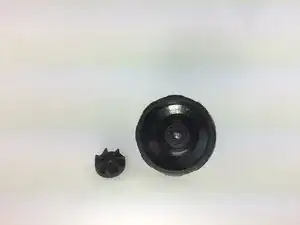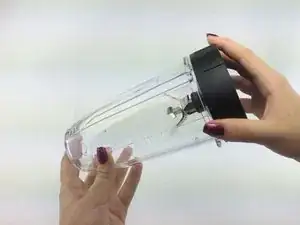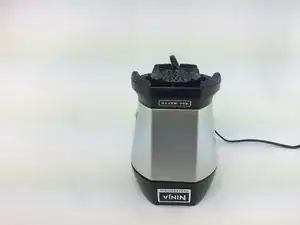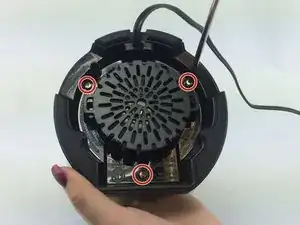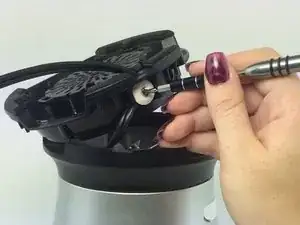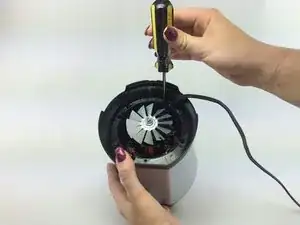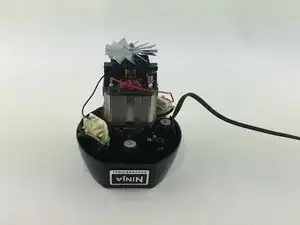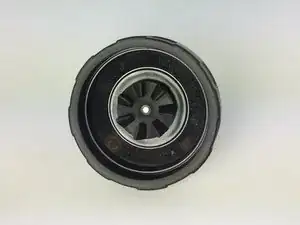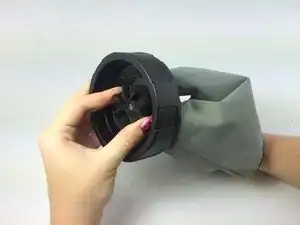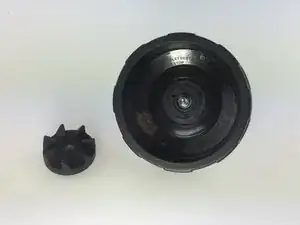Introduction
Using this guide, the user will be able to replace the small rubber wheel that connects the blade assembly to the blender base.
Tools
-
-
Turn the blender over and unscrew the three 14 mm screws holding the slotted base in place. These are Torx Security bits (TR9) on some units.
-
-
-
Using a the standard Phillips head screwdriver bit, remove the slotted black plastic covering and then unscrew the one 11mm screw holding the power cord in place.
-
Unscrew the four 14 mm screws that are in the deep slots. This will release the motor from the base.
-
-
-
Using a towel, hold the silver fan still. Twist the small black rubber wheel that is attached to the top of the blender base to the right. This will remove the wheel for replacement.
-
To reassemble your device, follow these instructions in reverse order.
3 comments
This makes zero sense. The pieces in step 4 are separate from those in steps 1-3. You say "hold the silver fan still" but the photo shows someone holding the blades. You also say to twist it to the right. It's nearly always counter clockwise.
When the writer says “hold the silver fan still” they obviously meant the blade, but why they’re calling it a “fan” is beyond me, maybe they’re not native english speaking & didn’t realize the error? Or maybe they’re trying to “dumb it down” for noobs?
For the twist direction however, it would seem the Ninja company uses a left-hand thread. Magic-Bullet blenders also use this threading on the gears. Look at the direction the motor/gear turns, if they used a regular right-hand thread, the gear would unscrew during normal use. By using a left-hand thread, the gear turns in the tightening direction during use.
Why don’t the blender-makers just have the motor turn the other way & use a standard right-hand thread for these gears?
Because it would be too easy for users to figure out how to remove & replace only the gears, instead of buying a $25 or $35 replacement blade assembly, or for the same price buying a whole new blender set. Seriously. WTF Ninja?
Ninja blender motto: “F**k mother nature, we want money!”
Nerfbomb -
The hard black plastic power transfer plate/wheel is left hand threaded and turned clockwise to remove so that the clockwise blender motor turns a slower wheel tighter not looser.
Both the power transfer wheel and the fan blades at the far end of the motor are held to remove the wheel. The photo shows the wheel clearly, the fan blade is covered with a towel to protect the hand holding it from the sharp metal edges of the blades.
The normal function of the aluminum fan is to move hot air out of the bottom of the housing.
The convention for electric motors is to turn clockwise facing the power output end of the shaft because EE’s prefer shorter words. The motor shaft is threaded by rolling it between two slotted steel plates, it costs the same to thread it left hand or right hand. In industrial quantity the nuts are identically priced and producing the motor to turn counterclockwise wouldn’t change the price either. It does drive tinkerers to distraction, I wouldn’t say that it is an objective.
